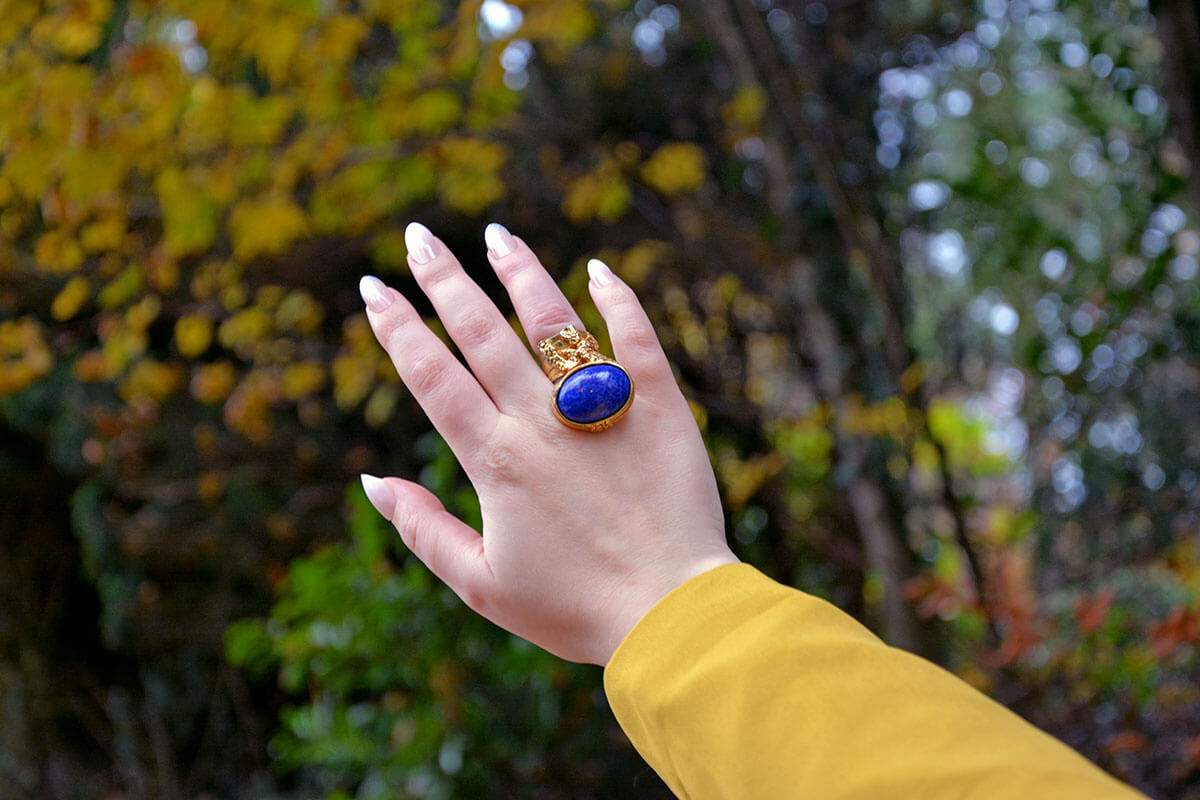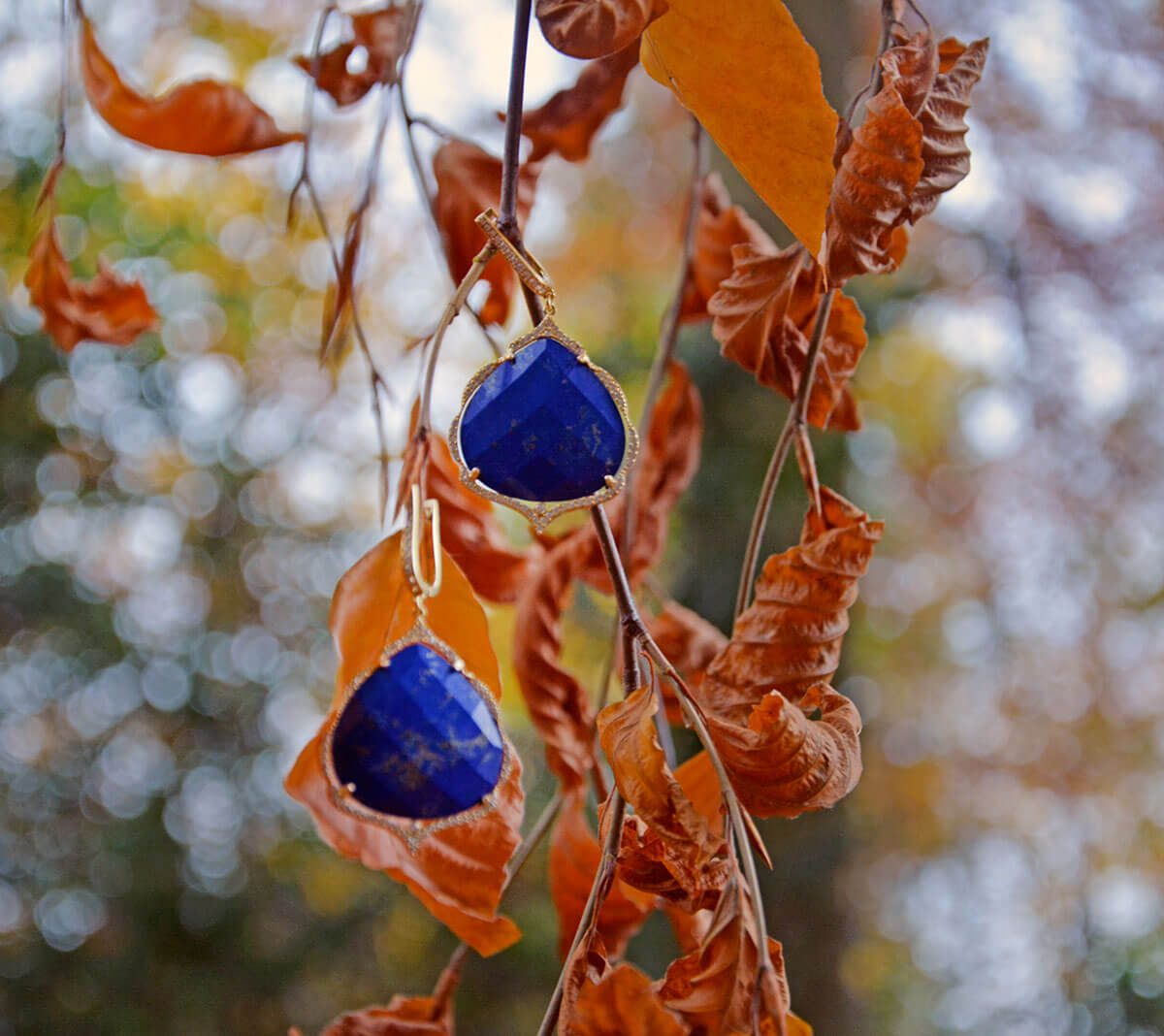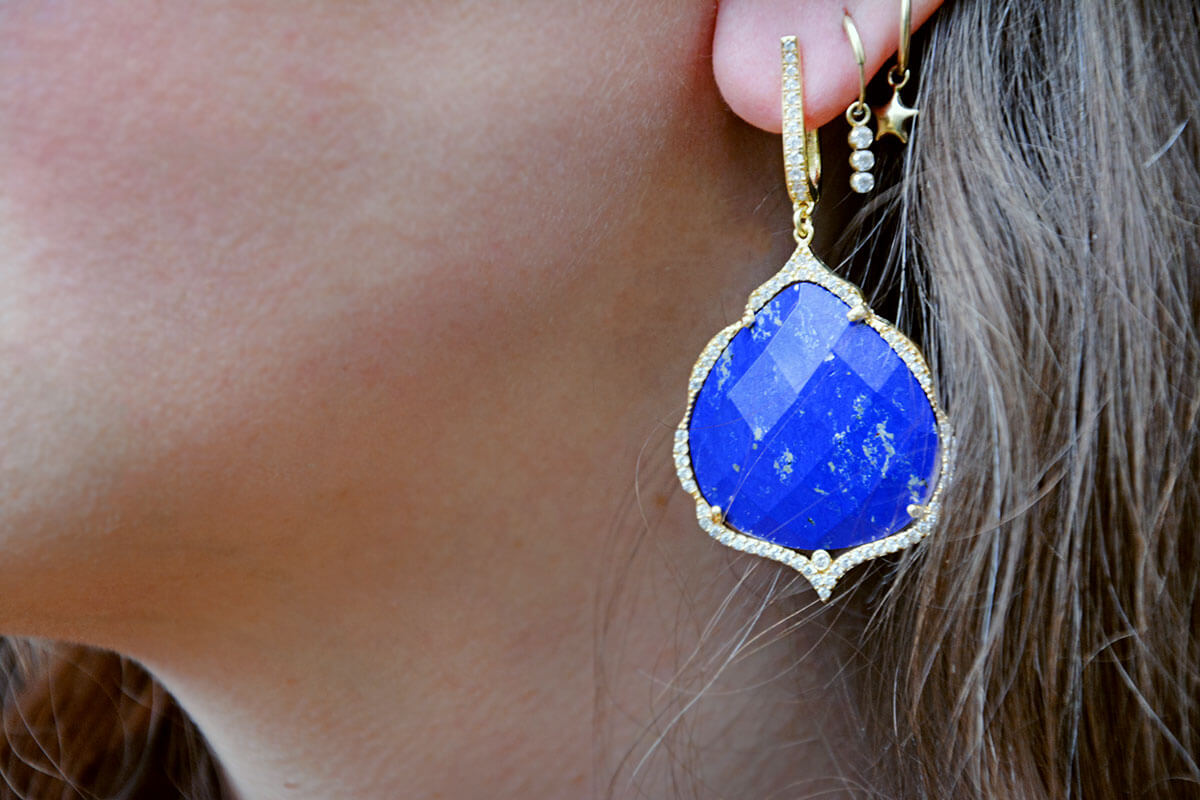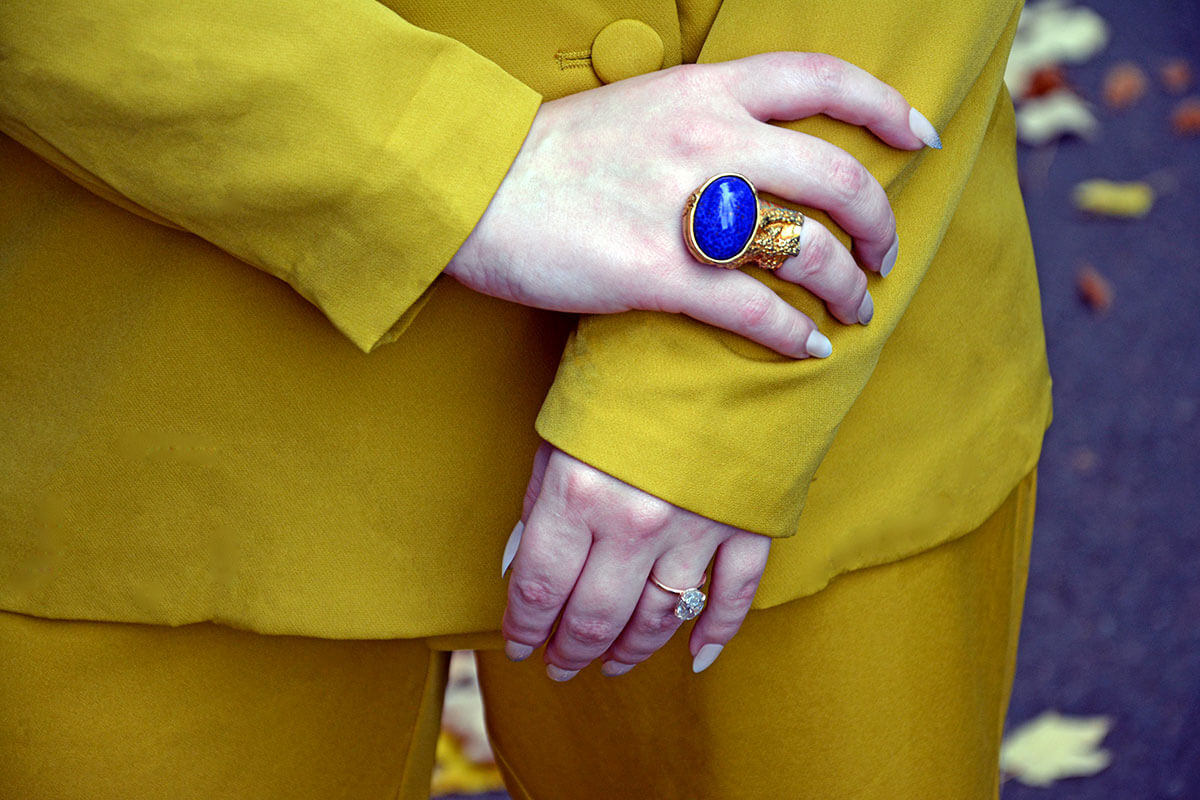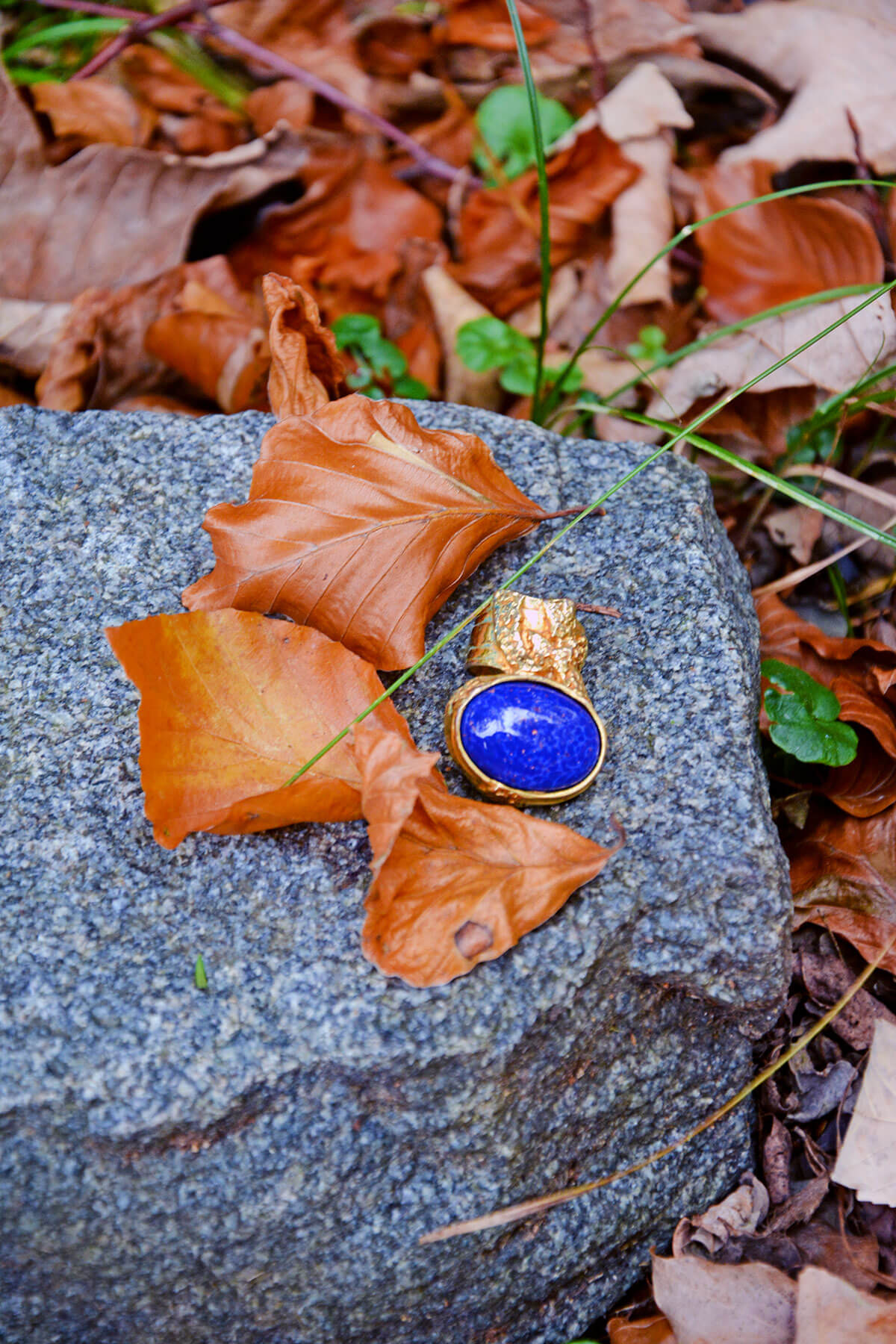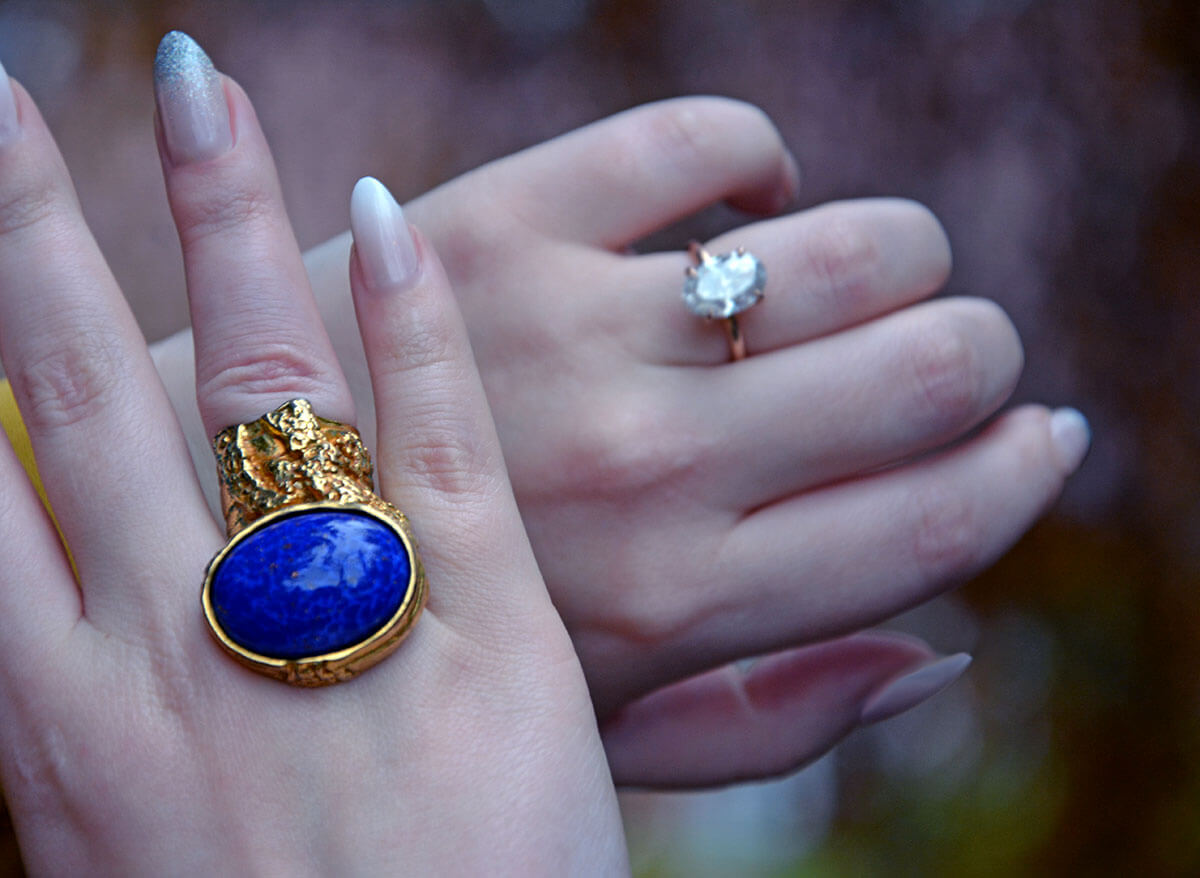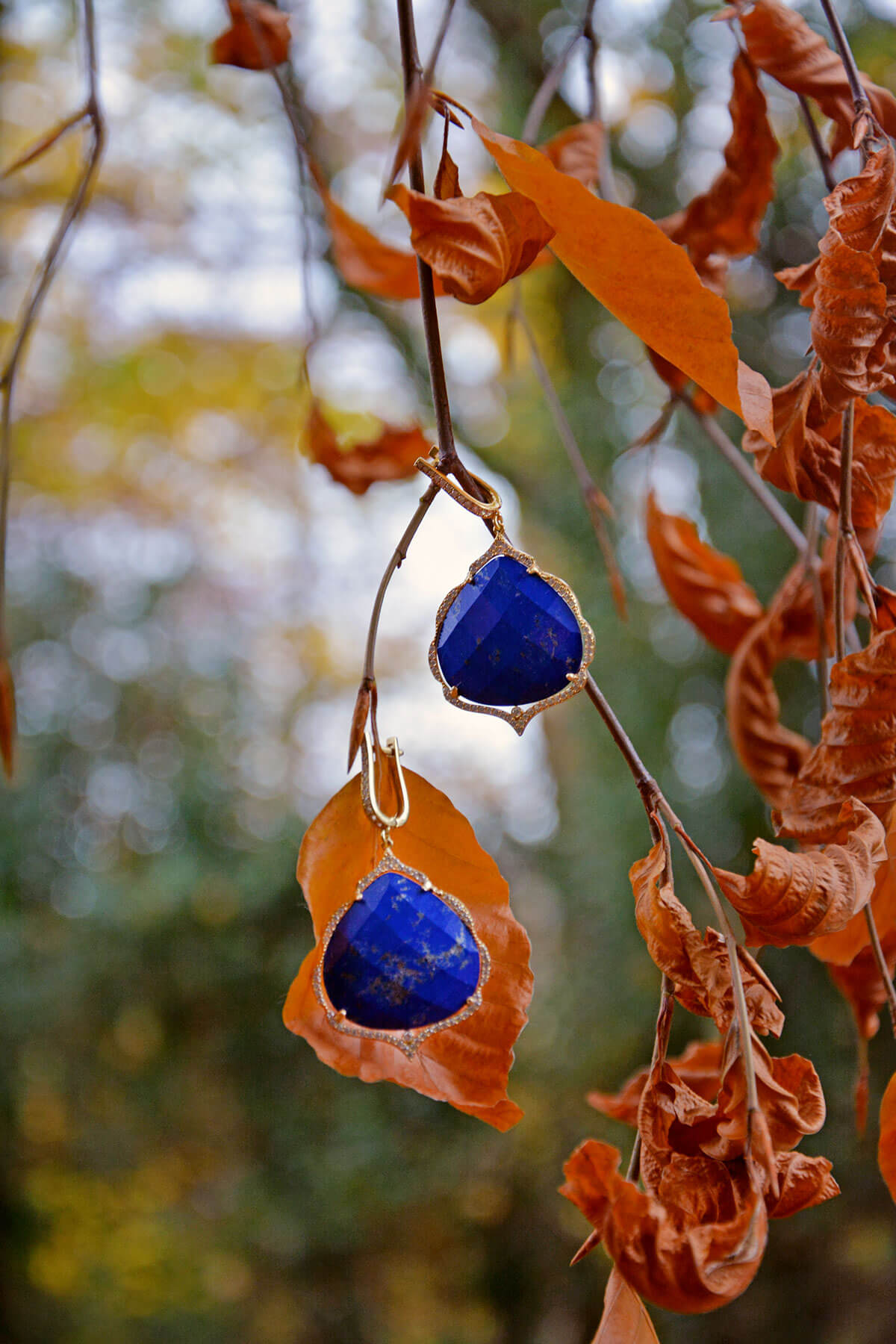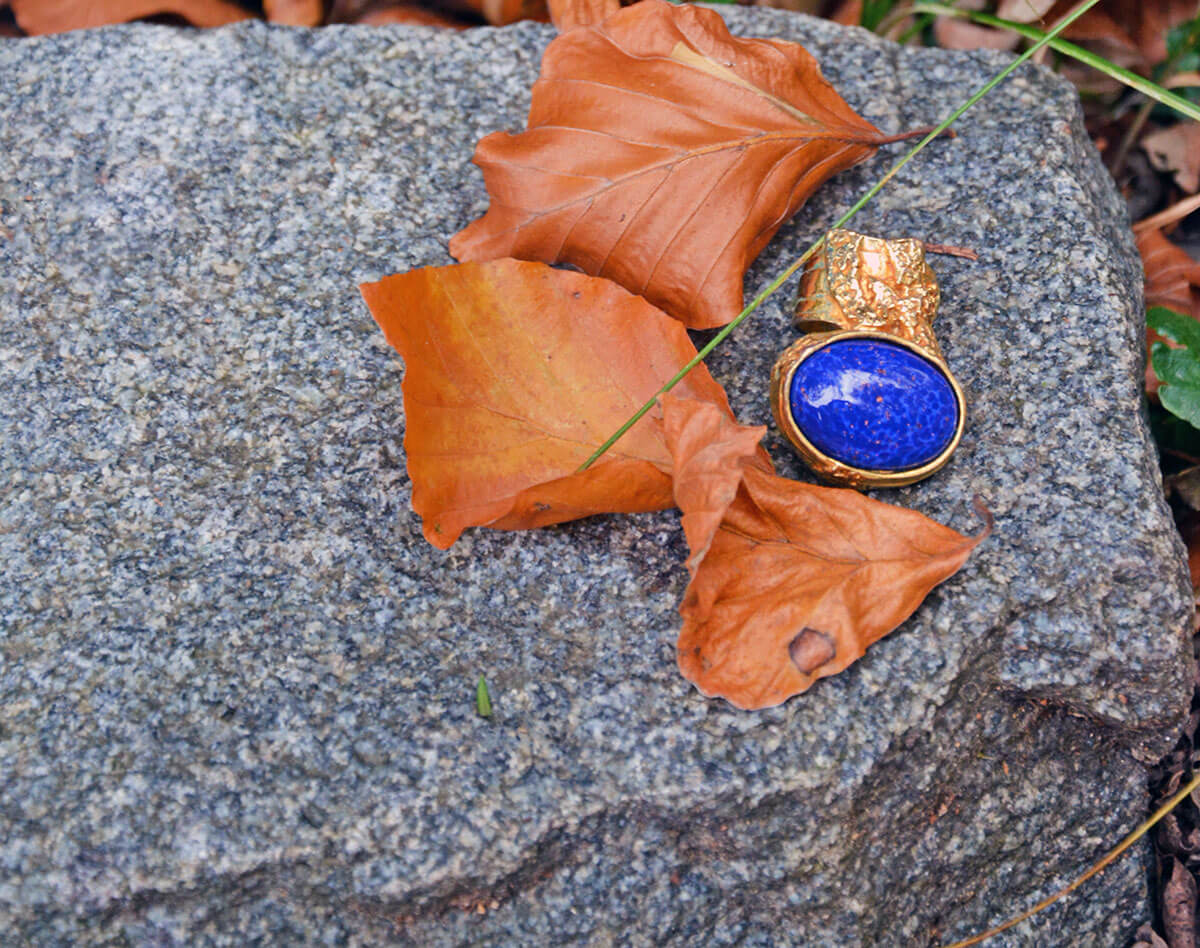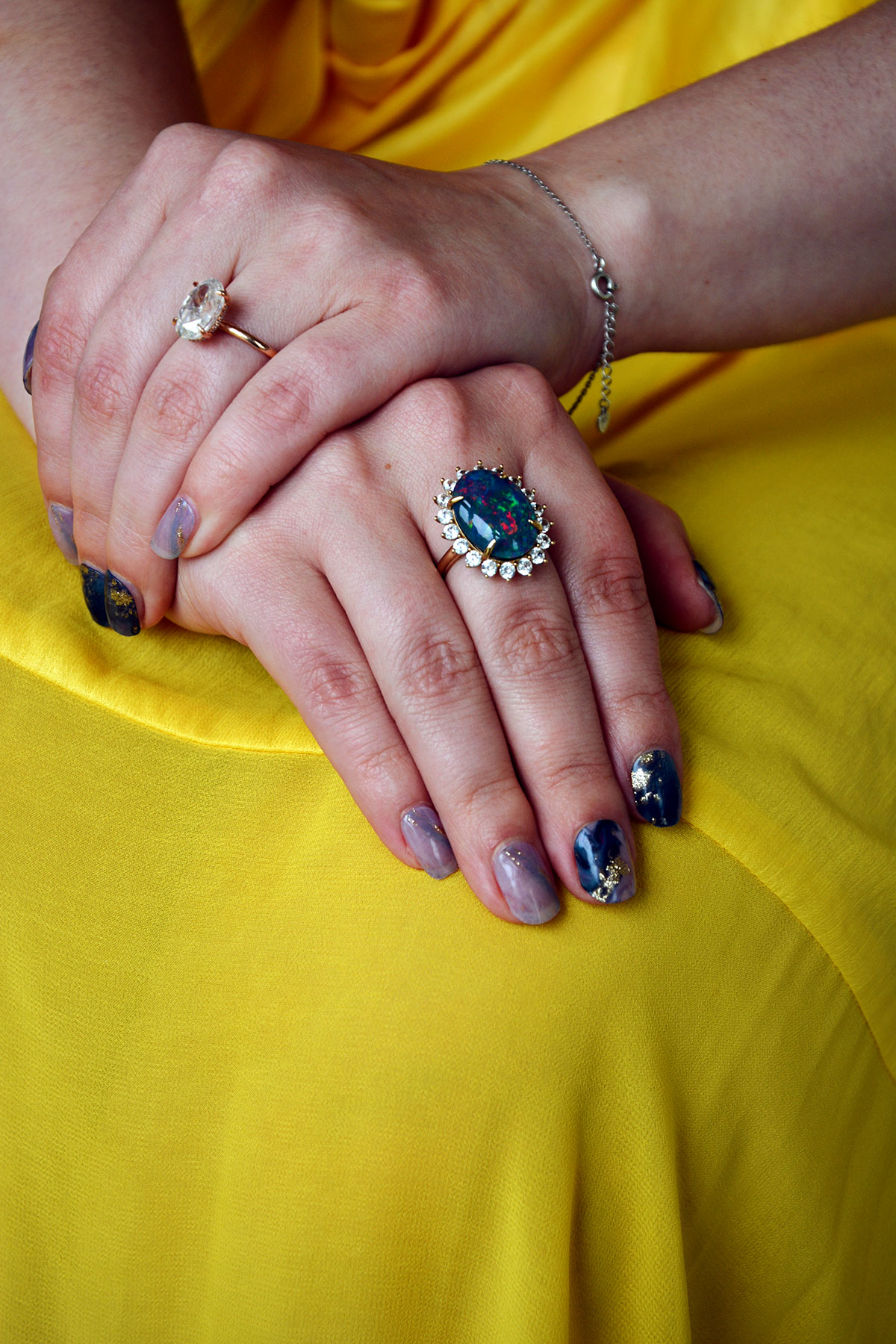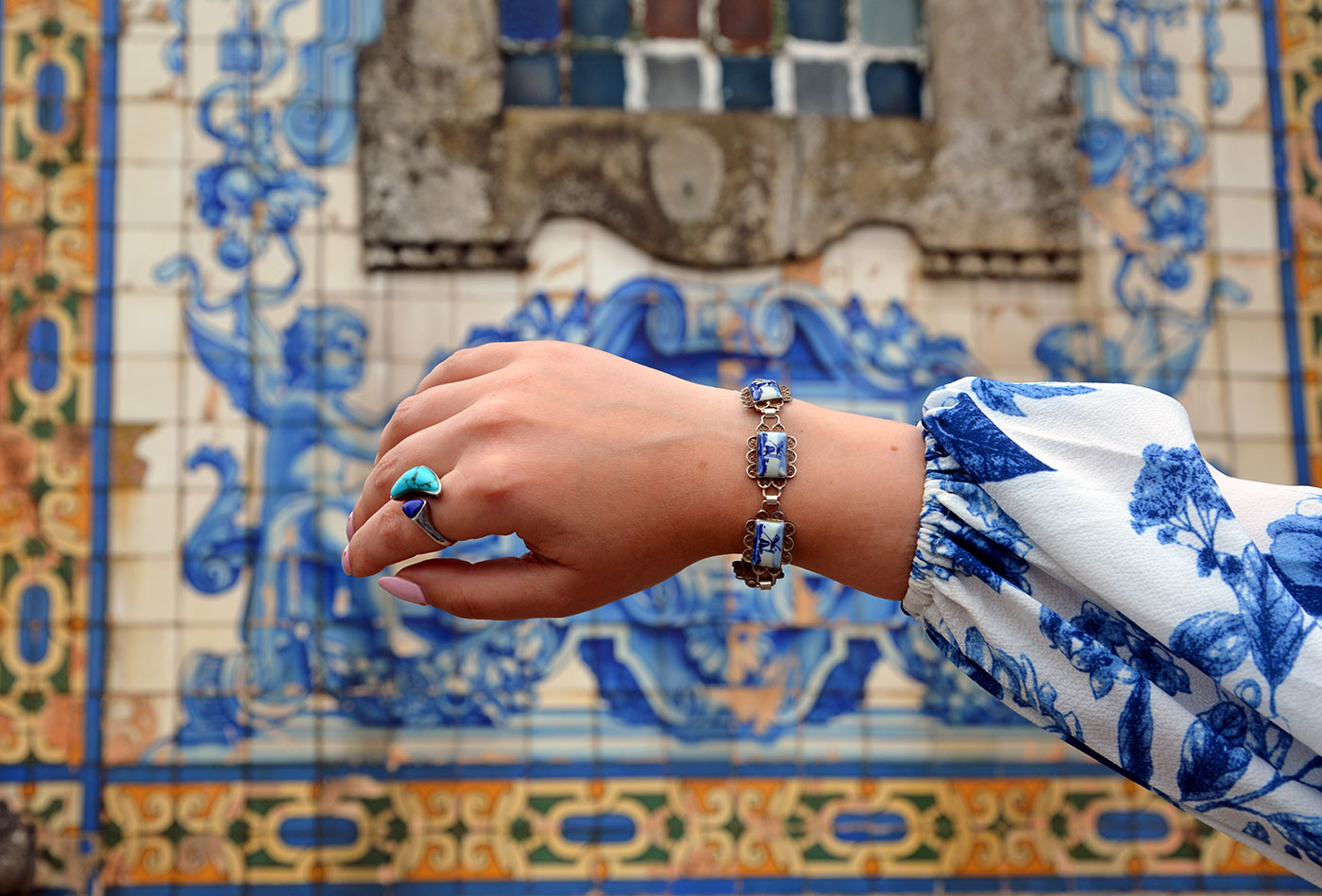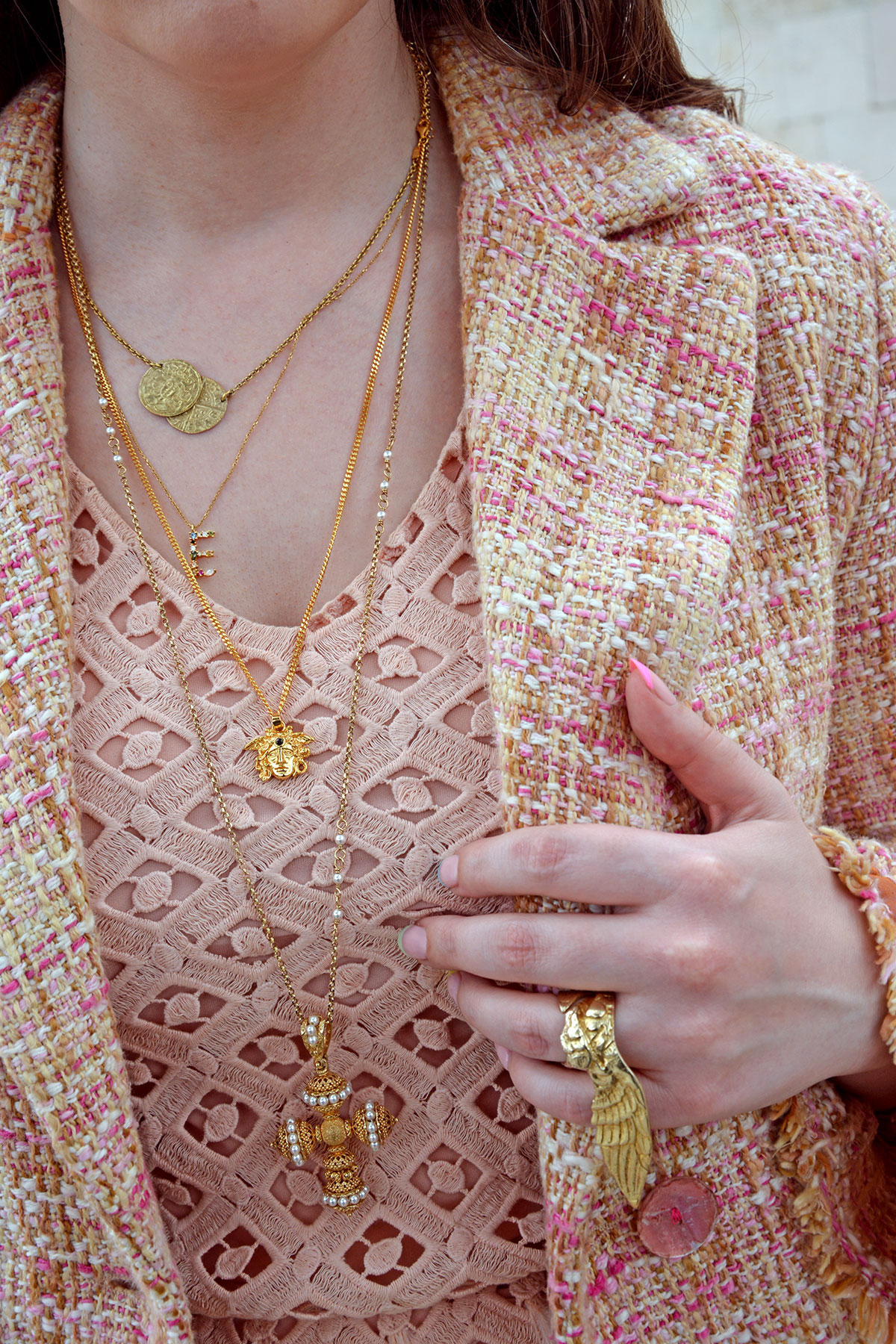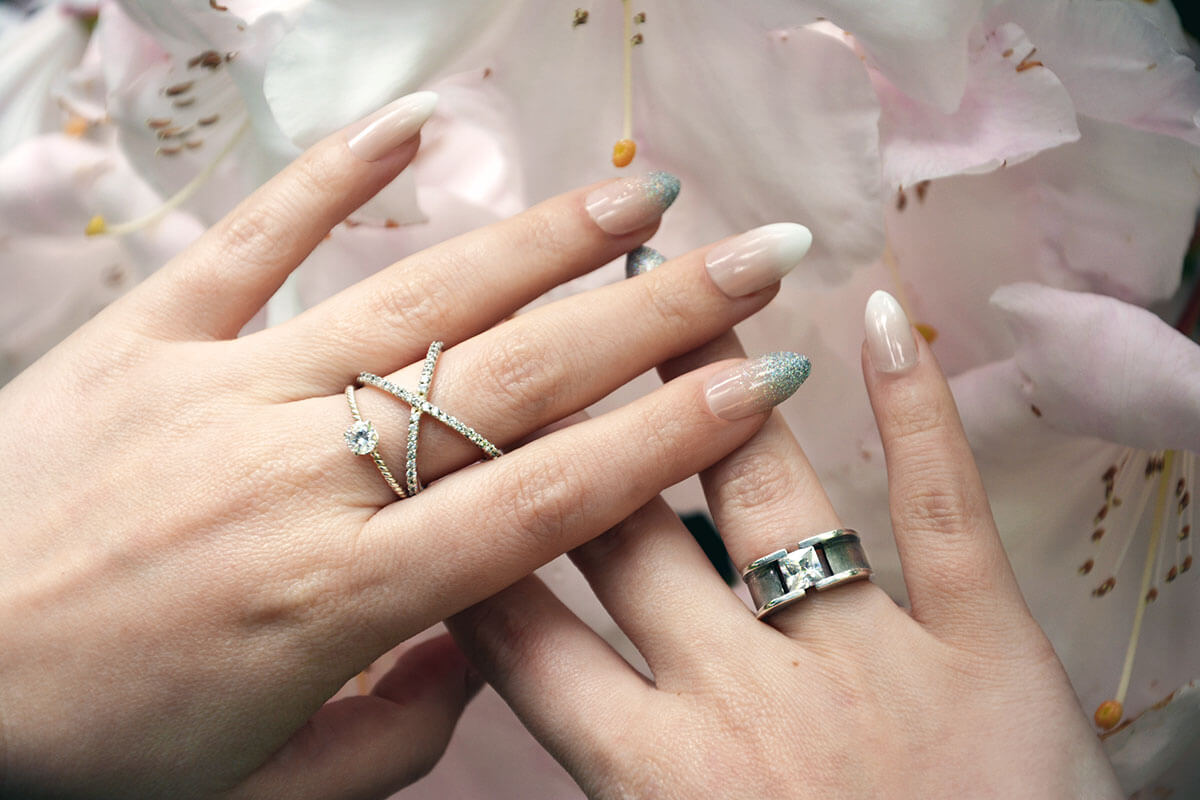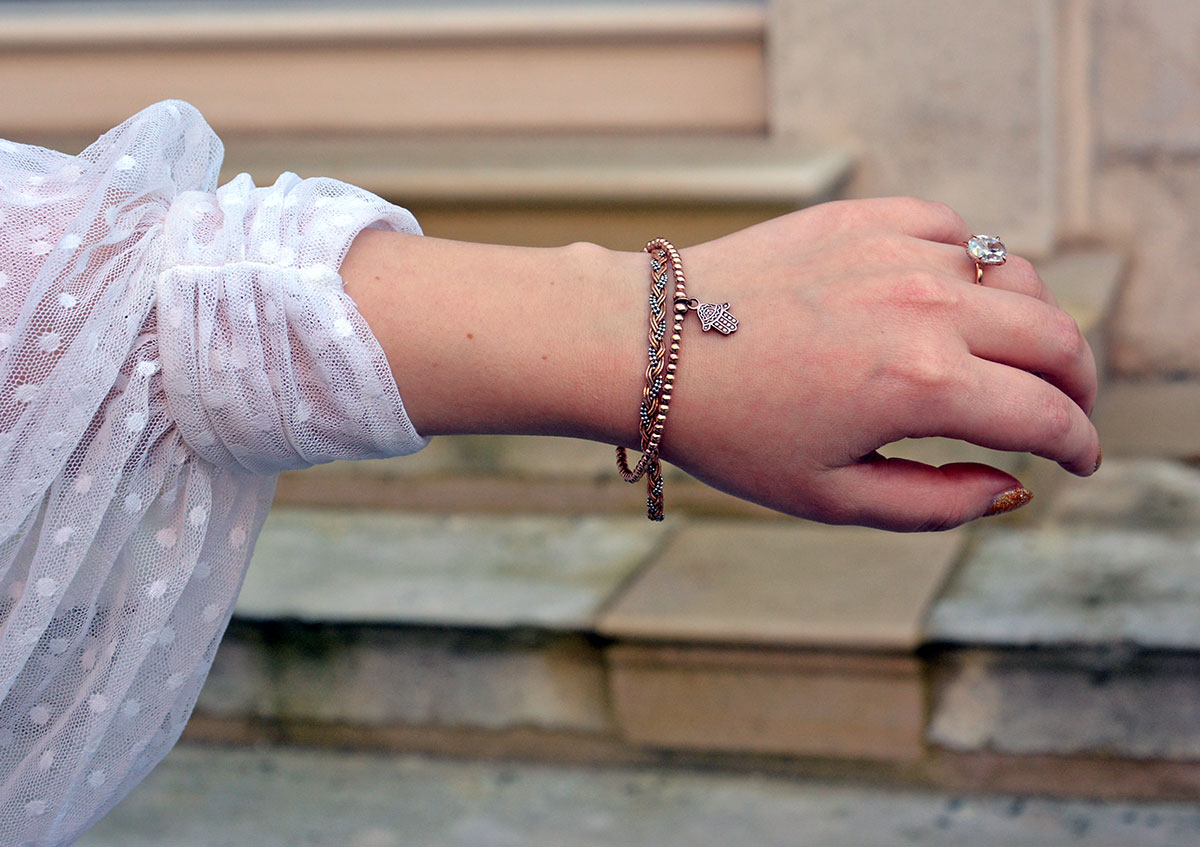If Cleopatra saw the lapis lazuli earrings I am wearing in the photos here, she’d be angry at me. To her, this would be a waste of blue eye shadow. According to historical sources, crushed up lapis lazuli was one of her favourite eye shadows. I wouldn’t let Cleopatra be angry at me for long though. I’d introduce her to Juvia’s Place and we’d be friends again.
Just like malachite, lapis lazuli has been adorning us for thousands of years. However, this heavenly gemstone is linked to some recent global events that have brought hell to earth. Let’s deep dive into five things that are worth knowing about lapis lazuli, and if there is a way to continue enjoying this gemstone while retaining ethic and moral values.
1. Lapis was the gem of choice for a visit to the Underworld for a Sumerian goddess
Perhaps not the most typical way to spend an afternoon, but Inanna, an ancient Mesopotamian goddess of love, beauty, sex, and political power, decided to pop to the Underworld for a funeral. She dressed for the occasion with gold rings, a beautiful lapis lazuli necklace and a measuring rod also made of lapis. As she stepped through the seven gates of the Underworld, she was forced to give up one item at each gate – long story short, she ended up naked and in trouble. Luckily, she managed to escape the Underworld… only to come out being stalked by demons AND stumble upon a semi-cheating husband. Wait, how is this story suddenly so XXI century relatable?
2. Before the Roman Empire, mentions of sapphire were actually mentions of lapis lazuli
Lapis lazuli was all over the ancient classics – including the Epic of Gilgamesh, one of the world’s oldest literary pieces, which supposedly was recorded on tablets made of lapis. The lasting power of these tablets would be questionable as lapis on Mohs scale of hardness comes at 5-6, which is far from the hardest. But interestingly, not all ancient sources say lapis lazuli – a lot of them mention sapphire instead, the Old Testament included. Scholars agree that mentions of sapphire pre Roman Empire most likely refer to lapis lazuli and not sapphire as we know it today. One of the spiciest examples is from Exodus 24:10: “And they saw the God of Israel, and there was under his feet as it were a paved work of a sapphire stone…” Of course, Moses, when he wrote Exodus (allegedly), meant lapis when he said sapphire stone.
3. Lapis was a favourite of Medieval, Renaissance and Baroque painters
It’s not only Cleopatra who liked to get crafty with lapis lazuli. Ultramarine was the most expensive and desirable blue shade for old European master painters – and it was made of ground lapis of course. Famous painters including Masaccio, Titian and Vermeer used ultramarine very sparingly, often saving it to build depth within the sky, or to add vibrancy to the attire of the paintings’ central figures, especially if it happened to be the Virgin Mary.
4. Lapis lazuli actually stands for stone from heaven
In Latin, lapis means stone, meanwhile lazuli comes from Medieval Latin that is a derivative from the Arabic word lazulum. The plot thickens, as lazulum is also a derivative from a Persian word – lājevard, meaning heaven or sky. This is because a good chunk of lapis lazuli used to be mined in an area called Lājevard, in modern day Iran. Also, those who speak Spanish or Portuguese will notice that the word azul, which stands for blue, is a root of the word lazulum.
5. But lapis lazuli has brought hell to many
Afghanistan is the main location of lapis lazuli mining, the province of Badakhshan in particular. There are other places where lapis is found, for example Russia’s mines west of Lake Baikal and mountainous regions of Chile. Memorable mentions also go to Pakistan, Italy, Mongolia, USA and Canada where smaller quantities have been identified. This doesn’t change the fact that Afghanistan is the key player in the lapis mining game. Unfortunately, this also means that with the Taliban taking over the country, the struggles intensified over control of Badakhshan’s lapis mines, claiming lives and resulting in illegal mining of the gem, where all the profits go to the Taliban. While this is not a political blog, I refuse to gush over a gem that enables and enriches men who oppress anyone who doesn’t follow their made-up rhetoric: Women, who want to be educated and independent, minorities, those of other religious beliefs or sexual orientation. If you feel the same way, you need to approach purchasing lapis carefully. Here are three truths to note behind the current lapis lazuli market; the watch-outs, the protests and the opportunities to retain ethic values when considering to buy a lapis piece.
- There are currently no regulations around lapis lazuli, and when purchasing a new piece with lapis, there is no guarantee that it is conflict-free. Let’s not kid ourselves. The jewellery industry sees prestige in purity, but can actually be extremely dirty. Think about the origin of gold, diamonds and other gemstones – before tighter control on the materials was introduced, a lot of money went to support rebel groups leading to massacres and bloodshed. Amplifying the conversation around the issues behind blood diamonds for example, resulted in the inception of the Kimberly Process, a regulation which has been tasked with reducing the flow of conflict diamonds into the consumer space. Lapis lazuli could be next in line. Don’t ignore it, but every time you wear lapis, use the opportunity to raise awareness about its potential Taliban link, so that those who profit from it are hard-working Afghanis, rather than the extremist group who is controlling them. The goal is not to avoid or stay silent, it is to oppress the oppressors, and redeem the beauty that the Taliban worked so hard to turn into ugliness.
- Some vendors refuse to sell lapis lazuli. Shout, tag and support them. It’s not because they don’t like it, it’s because this is their way of raising awareness. Join them.
- The secondary market is strong when it comes to beautiful lapis lazuli designs. Opt for vintage, antique pieces of lapis that have been in circulation for tens or hundreds of years. This way, you get to enjoy the gemstone, but the Taliban gets zero support from you.
Now that the truths are out there, I will leave you with a dare. If you already have pieces with lapis, wear them to shout about the problems with its origins, so that more people hear about the issue. Mass awareness can put pressure on the right personas to take action resulting in the reduction of illegal mining of lapis, forcibly taking profits away from the Taliban. The aim is to make lapis lucrative for the artisans and miners who bring this gemstone to life for us all to admire. They have been doing so since 7,000 BC, so let’s not stop the tradition. What we need to stop is the terror.
Do you wear lapis lazuli? Were you aware of its unfortunate recent history?
In the images I am wearing earrings by Latelita, and a costume simulated lapis artsy ring by YSL.

